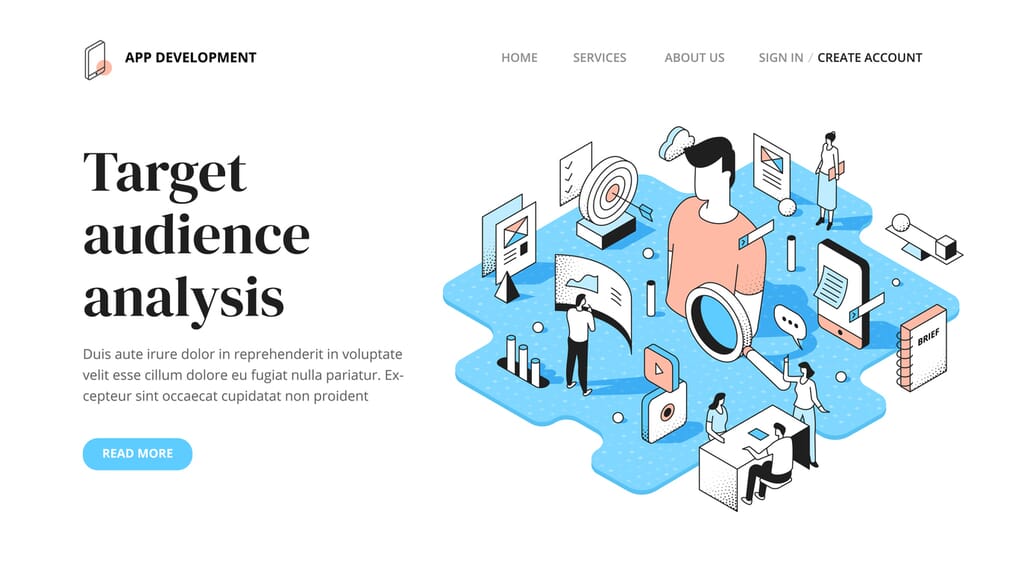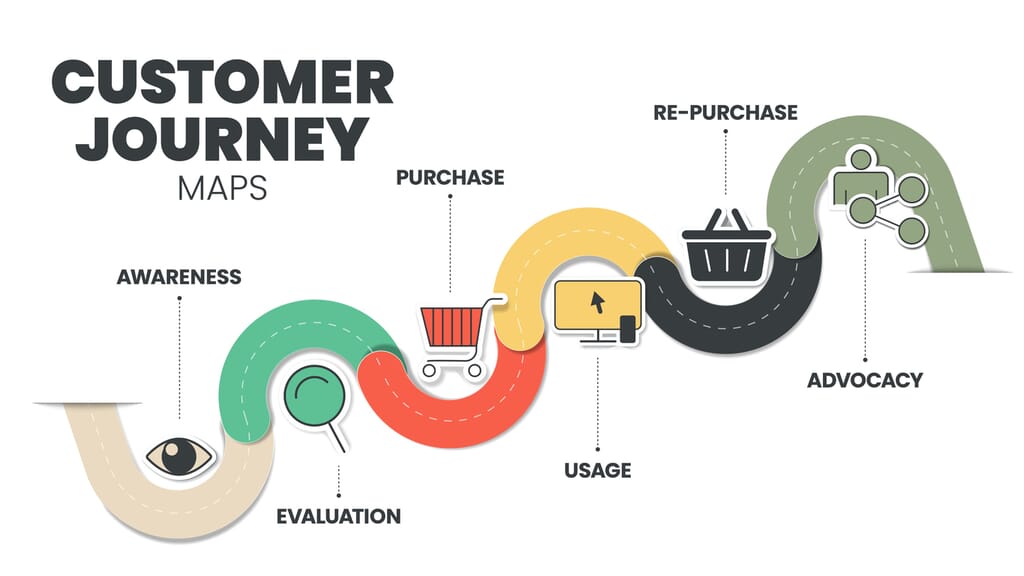Marketing videos do an excellent job of boosting brand awareness.
According to Renderforest.com, 83 percent of marketers say that videos help generate more leads, 75 percent of people are more likely to follow the social media page of a brand if it has videos, and 74 percent of businesses say that videos receive the highest engagement on social media.

Further, in 2022, 96 percent of marketers planned to increase their video budget and 97 percent of businesses said videos would be a priority for them.
These statistics speak for themselves.
They emphasize one fact: In today’s competitive business universe, marketing videos are indispensable for retailers and brands alike.
How Marketing Videos Can Drive Sales and Engagement
Videos are fun to watch. That’s the reason they attract more traffic and get you high conversions. They can also make a large impact on the purchase decision process, helping you increase your conversion rate.
Videos evoke emotions, capturing attention instantly.
Well-made marketing videos are effective because they appeal to your target audience, allowing you to connect emotionally with them.
A deep emotional connection can persuade a viewer to engage, interact, and purchase from you. Hence, a captivating marketing video can influence viewers to purchase, boosting your sales.
The purpose of this guide is to help studio managers effectively create, distribute, and measure video performance.
Section 1: Understanding the Value of Marketing Videos
Statistics on Marketing Videos Effectiveness
According to Optinmonster.com:
- 96 percent of digital marketers say that marketing videos have increased viewers’ understanding of their products or services.
- 95 percent say that marketing videos have helped them boost brand awareness.
- 92 percent say that marketing videos have given them a good ROI.
- 91 percent say that marketing videos have helped them drive higher internet traffic.
- 90 percent say that marketing videos have helped them generate leads.
- 87 percent say that marketing videos have increased dwell time on their business websites.
- 87 percent say that marketing videos have helped them increase sales.

Case Studies of Successful Marketing Videos Campaigns
1. DollarShaveClub.com – Our Blades Are F***ing Great
You simply can’t look away from this video. Michael Dubin’s affable charm is too captivating. By the end of the video, you’re tempted to watch it a second time.
Importantly, you’ll want to immediately sign up for the monthly razor service.
Views: 28 million
Why Did This Marketing Video Go Viral?
The script is right, the video is humorous but doesn’t go over the top, and Mike seems to be like someone you know. Also, the 93-second video is fast-paced, fun to watch, and tells you everything about the product and service.
2. GoPro – Million Dollar Challenge Highlight
GoPro sells the world’s most versatile action cameras and video-editing software.
This thrilling and entertaining video creates an immersive experience for the brand’s main target audience—outdoor enthusiasts, professional photographers, and sports photographers.
Views: 3.6 million
Why Did This Marketing Video Go Viral?
Most of GoPro’s videos are user-generated, meaning the viewer can see the real experiences and insights on offer.
GoPro’s Million Dollar Video Marketing Campaign received 25,000 submissions. The company selected 56 creators from 22 countries.
3. Google Earth – Our Cities Time-lapse
The video opens with an interesting stat: “In the last 35 years, the urban population has grown by 2.3 billion people.”
The viewer can then see a digital reconstruction of urban growth in action in different cities. Barren deserts and deserted river banks evolve into large cities in this time-lapse video, which spans 1984 to 2020.
Views: 4.6 million
Why Did This Marketing Video Go Viral?
The Google Earth product is shown in action as the viewer witnesses how urban growth can impact the planet.
The video’s touching message, “Cities account for more than 70 percent of global carbon dioxide emissions” appealed to lots of people.
How Do Videos Enhance Product Pages on Websites and Amazon?
Videos are an efficient format because they allow you to communicate maximum information in minimum time. For most people, videos are the easiest content to consume. Few people would prefer to read a long text description over a video.
Videos give customers a clearer picture than product images alone. They can improve customer confidence and elevate your brand perception.
Videos that feature real people and focus on storytelling are the most engaging, as they convey emotions. Storytelling also adds a human dimension to your message.
The key to authenticity is the story of the average buyer, with the customer narrating their experience of using your product/service. That’s what makes user-generated videos, such as customer testimonials, highly valuable on business websites and Amazon.
Section 2: Pre-Production Planning
Pre-production planning is indispensable for producing videos, as it provides direction and clarity for the whole production process. Let’s look at the main steps.
1. Defining Objectives and KPIs
Setting Clear Goals:
a) Brand Awareness: Create videos to increase brand visibility and recognition.
Brand awareness is the level to which potential customers recognize a brand and correctly associate it with its specific product or service.
When creating videos for the first time, the primary goal isn’t to get conversions. It’s to get people to start to recognize the brand.
According to Vidico.com, at least 75 percent of people favor watching videos over reading plain text for learning about products/services. Another advantage is that viewers retain 95 percent of a message they see on a video.
Since videos are memorable and engaging, they work well for brand awareness. Unlike bland text, videos engage multiple senses simultaneously.
Videos are the most shareable form of online content for a majority of people. That’s the reason over 50 percent of people who watch a video will probably share it with others in their network.
Aim to create videos that convey information, emotions, and brand news through a fine blend of visuals, audio, and text.
b) Lead Generation: Produce content aimed at capturing leads and driving conversions.
Lead generation through videos puts a face to a brand, enabling it to turn visitors into leads and paying customers. Hence, when you produce videos, you must focus on getting paying customers.
Videos can engage viewers and convert interest into action. With a clear goal, it’s easier to maximize the potential of video marketing to drive concrete results.
Persuade viewers to join the brand’s newsletter or collect their email addresses by offering a compelling lead magnet. You can nurture these leads and, eventually, convert a small percentage into paying customers.
c) Customer Education: Develop tutorials and how-to videos to inform and educate customers about product features and usage.
For many years, marketers have said: “An educated buyer is a better buyer.”
Educating customers about the features that make your product/service stand out will allow them to make more confident buying decisions. Hence, the goal of customer education videos is to increase the value of customer relationships.
The videos must help the customer understand everything that the brand’s product range can do, not just the one product they’ve purchased.
Customer education videos could also focus on helping customers get more value from the product they have already purchased so that they continue to spend money on the brand’s other products.
Identifying Key Performance Indicators (KPIs):

KPIs are numbers that indicate the performance of your marketing videos. The following 5 KPIs are essential to understand the effectiveness of the video content produced.
a) Views and Impressions: Measure the reach of your videos.
Views measure the number of times your video has been watched. With this metric, you can get an accurate count of the eyeballs on a particular video.
Impressions reveal the reach of your video marketing campaign. This metric allows you to track the number of viewers seeing yours ads, enabling you to identify areas that you can refine your targeting or messaging.
b) Engagement Rate: Track likes, shares, comments, and interaction time.
The Engagement Rate is the total number of people who engage with a video divided by the total number of followers, multiplied by 100.
Total Engagement = the sum total of all interactions (likes, shares, comments, and interaction time).
Total Followers = the sum total of the people who follow your account.
c) Conversion Rate: Monitor how many viewers take the desired action (e.g., signing up, purchasing).
Conversion Rate is the percentage of video viewers who take the intended action, such as filling out your contact form, signing up for your newsletter, or making a purchase.
d) Click-Through Rate (CTR): Assess the effectiveness of call-to-action elements in your videos.
CTR indicates how often viewers watched a video after its title and thumbnail were shown to them. This metric measures the percentage of viewers who clicked on your video after seeing it in their feed, suggested videos, or search results.
Conduct A/B tests to compare different variants of CTAs (call-to-action) in terms of wording, placement, color, and more. Evaluate the performance metrics to identify the top-performing CTA elements.
e) Return on Investment (ROI): Calculate the financial return relative to the cost of video production and distribution.
Marketing video ROI is the ratio of the net profit/loss generated by a video campaign to the total cost of production and distribution of the video.
The following equation is the formula for this KPI:
ROI = Sales – Production & distribution cost / Production & distribution cost.

Outsource Photo Editing Services
Picsera offers photo editing and retouching, so you can focus on your business instead. Spend a fraction of the cost, time, and effort of photography with Picsera. Click here to find out more.2. Target Audience Analysis
The key to business success is accurate Target Audience Analysis. Understanding and defining your target audience is crucial for creating videos that resonate well with your intended audience and drive engagement.

Modern consumers are dynamic and evolving constantly. They are tech-savvy and spoilt for choice. Hence, you need to analyze a broad collection of information to be successful at this complex task.
Here’s a detailed breakdown of the steps involved in target audience analysis:
1. Gathering Demographic Information
Key Demographic Factors:
a) Age: Determine the age range of your target audience. Different age groups have different preferences and viewing habits.
Age segmentation means concentrating on the age range most relevant to your product/service. Typically, the demographic age brackets are 18–24, 25–34, 35–44, 45–54, 55–64, and 65 and older.
(Note: Many products, such as children’s toys, ladies’ jewelry, and electric toys, appeal to consumers across different age brackets.)
b) Gender: Understand the gender composition of your audience to tailor content and messaging accordingly.
Male and female buyers exhibit different shopping habits. That’s the reason brands create separate video marketing campaigns geared at a specific gender.
While running one unified video marketing campaign may be effective for gender-neutral products such as digital cameras, Smartphones, and laptops, a gender-specific campaign will be more effective for products such as shoes, shampoos, and clothes.
c) Income Level: Consider the income level of your audience to align your product positioning and pricing strategy.
Income level enables you to understand the purchasing power and affordability of your target audience. Analyzing income data will help you tailor your messages and promotions to resonate perfectly with specific income brackets.
d) Education Level: Take into account the education level to gauge the complexity of language and concepts used in your videos.
Analyzing educational backgrounds will help you tailor your strategies and messages to successfully reach your desired demographic. Data on education level will also help identify individuals who prefer intellectually stimulating information.
e) Location: Identify geographic locations where your audience is concentrated. This can influence language, cultural references, and regional preferences.
You can create a location-specific video marketing campaign based on the geographical location of your target audience. Analyzing location will help you target local keywords and promote your products/services in specific regions.
Sources of Demographic Data:
a) Website Analytics: Use tools like Google Analytics to gather demographic data on your website visitors.
Google Analytics is a free tool that gives detailed audience information for your business website. This behind-the-scenes analysis will indicate the audiences that are most interested in your videos.
Website analytics also provide insight into the interests of your customers, helping you understand them better.
b) Social Media Insights: Platforms like Facebook, Instagram, and LinkedIn offer insights into the demographics of your followers and engaged users.
Social media analytics will help you identify the videos that are performing well and the ones that are not. You can fine-tune the video content accordingly.
For instance, let’s say a video has a higher number of views but low engagement. It indicates that the content needs to be refined so that it’s more engaging for your target audience.
c) Market Research Reports: Utilize industry reports and studies that provide demographic insights relevant to your niche.
You need exceptional market intelligence to minimize risks.
Market research reports provide data on your industry’s size, competitive landscape, trends, key competitors, and outlook.
Analyzing the information in these reports will help you identify how leads and potential customers view your business and understand customer expectations better. You can then make the necessary changes and adapt your video marketing strategies.
2. Understanding Psychographics

Psychographic Factors:
a) Interests and Hobbies: Know what your audience is passionate about and what hobbies they pursue. This can help in creating relatable and engaging content.
Interests and hobbies reveal the likes and dislikes of your target audience and what they’d be willing to spend on.
Books, entertainment, music, arts, media preferences, sports, community events, etc.—people’s interests and hobbies vary widely. Having an insight into this can bolster your video marketing efforts.
b) Values and Beliefs: Understand the core values and beliefs of your audience to align your messaging with their principles.
The values and beliefs of your customers can drive their purchasing decisions.
Values are what your customers prioritize and what they feel is essential. Beliefs are what your customers think is true and worth trusting.
The following are some common examples of customer values and beliefs:
- Hard work is important.
- A result-oriented approach is effective.
- Businesses must address customer needs.
- Businesses must not focus only on profits.
Aligning with the values and beliefs of your customers will ensure better customer engagement and long-term business success.
c) Lifestyle: Consider the lifestyle choices and behaviors of your audience, such as work-life balance, social activities, and health-consciousness.
Lifestyle refers to a person’s everyday activities—job responsibilities, family commitments, entertainment preferences, diet, and hobbies. It also includes the area in which they live, the kind of people they associate with, and how they like to spend their time.
You can use this information to provide a potential customer with what’s lacking in their life. For instance, a person living in a busy city would prefer to spend their vacation in a secluded environment. A travel agency could use this information to target urban residents.
d) Personality Traits: Identify common personality traits, such as introversion vs. extroversion, risk-taking vs. cautiousness, etc.
An individual’s personality can be defined on the following 5 major dimensions:
- Extroversion
- Openness
- Conscientiousness
- Agreeableness
- Neuroticism
Use psychographic data to evaluate these traits and segment your audience based on similar ones. A customer’s personality typically correlates with their buying habits.
Once you have an idea of the general personality traits of your target audience, you can tailor your video marketing campaigns to appeal particularly to those customers.
Methods for Gathering Psychographic Data:
a) Surveys and Questionnaires: Conduct surveys to gather detailed psychographic information directly from your audience.
Psychographic data represents the qualitative segment of understanding individuals.
Customer surveys and questionnaires are inexpensive to conduct, as they can be sent electronically for the convenience of participants. This kind of market research has wide acceptance and overall consumer familiarity.
The major drawbacks of surveys and questionnaires are that the participant involvement is low, and the answers of participants to certain questions may not be honest.
b) Focus Groups: Organize focus groups to dive deeper into the attitudes, values, and preferences of your target audience.
A focus group is a set of people, generally not affiliated with your brand. The people in the group participate in an unbiased discussion about your products. Hence, you must craft a thoughtful questionnaire to uncover the important needs and wants of your target audience.
The participants must align closely with your target market. For example, if you sell running shoes, your focus group should comprise half marathon enthusiasts—not just someone who desires to participate.
c) Social Media Monitoring: Observe discussions and engagement on social media platforms to gain insights into interests and values.
The main advantage of social media monitoring is that it will provide you with real-time insights into customer conversations and trends. An effective way to do this is to set up alerts and notifications for your industry’s prime keywords or topics.
3. Analyzing Behavioral Data
Key Behavioral Factors:
a) Purchase Behavior: Study how often your audience makes purchases, their preferred purchasing channels, and their spending habits.
From a customer’s perspective, purchase behavior involves the evaluation of various choices, the review of price and quality, and the ultimate purchase decision.
A diligent analysis of purchase behavior will help you understand what drives your customers to choose your product/service over your competitor’s.
Ensure your customers have a positive purchase experience, as it will eventually work in the favor of your brand.
b) Engagement Patterns: Analyze how your audience interacts with your video content across different platforms. Look for patterns in likes, shares, comments, and viewing duration.
Video analytics will present you with insights into which videos are the most effective at engaging and converting viewers. You can use these valuable insights in your future video content creation.
For instance, if your brand sells watches, analyze which product videos drive the highest conversations. If a particular style does well, create more videos around it.
c) Feedback and Reviews: Pay attention to feedback and reviews provided by customers to understand their experiences and pain points.
Feedback and reviews are the lifeblood of business. These vital sources of direct customer input give you honest insights into what your customers like and dislike about your product/service.
Feedback and reviews can also help you discover the wants and needs of your customers and their expectations of your brand.
Tools for Behavioral Analysis:
a) Customer Relationship Management (CRM) Systems: Use CRM tools to track and analyze customer interactions and purchase history.

Since it’s easier to manage what you measure, you need CRM tools to help you understand the types of videos that appeal to your audience and the impact they have on your business.
When selecting a CRM tool, consider its ease of use, integration, and comprehensive engagement metrics. The following are some of the best CRM tools for marketing videos:
- YouTube Analytics
- Facebook Insights
- Wistia
- Vimeo Business
- Biteable
b) Website and App Analytics: Leverage analytics tools to monitor user behavior on your website and mobile apps.
Social media channels and video platforms provide you with an accurate insight into the general performance of your videos. However, Google Analytics is the best option to evaluate the performance of the videos on your business website.
With this robust tool, you can track clicks, demographics, conversions, referral data, revenue data, and more. This tool scores high on ease of use.
Click Analytics on the Videos page. To check how long visitors are watching your video and the point at which they’re dropping off, you can check Audience Retention.
Under Performance, you’ll see a brief summary of the specific actions that viewers have taken after watching your videos.
c) Heatmaps: Implement heatmap tools to visualize how users navigate and interact with your website or landing pages.
Heatmap is much the same as monitoring traffic patterns in-store. Website analytics tools, such as Adobe Analytics and Google Analytics, allow you to see how customers navigate your business website. This is referred to as a heatmap.
For instance, you can see whether your customers are frequently dropping off on the same web page. You can also see if there’s a connection between drop-offs, such as the kind of page (specific layout) or the journey stage of the buyer.
This information can help you understand where exactly you need to optimize your website, ensuring it’s user-friendly and easy to navigate.
4. Creating Buyer Personas
Elements of a Buyer Persona:

a) Persona Name: Give each persona a fictional name to humanize and differentiate them.
A name and image will humanize your buyer persona, promoting empathy and enabling you to tailor your video content better.
Remember, a single persona may not include the entirety of your target audience. Therefore, you must create several personas that represent diverse segments.
b) Demographic Profile: Age, gender, income, education, and location.
Accurate demographic data will help you segment your target audience into more refined subcategories.
Depending on your business niche, demographic data can be somewhat broad and extremely specific. For instance, many buyer personas specify an ideal age range of the model customer rather than a definite figure.
The same principle holds true for other demographic categories, such as gender and income. However, categories such as education level and location may be more specific.
c) Psychographic Profile: Interests, values, lifestyle, and personality traits.
Psychographic data reveals the reason a shopper might buy your product, allowing you to create marketing videos that appeal to them specifically.
Adding important psychographic details will help you round out your buyer persona and make them feel more like a real person. The more characteristics you add to describe your persona, the easier it will be to create videos they will relate to.
d) Behavioral Insights: Purchasing behavior, engagement patterns, and feedback tendencies.
Customer behavior varies widely. Understanding these behaviors will allow you to implement strategies that enhance customer experiences, eventually driving success in your marketing video campaign.
Qualitative research on behavioral insights can help you refine your video marketing strategies. You can also nurture your leads and prospective customers more effectively based on this newfound knowledge.
e) Goals and Challenges: Identify the main goals and challenges your persona faces that your product can address.
Understand your target audience’s aspirations and the obstacles they face in achieving them. You can directly align your product/service as the solution by understanding their pain points.
Focus on addressing customer challenges effectively, as it can position your brand as an authoritative and trusted partner in helping customers accomplish their goals.
f) Preferred Content Channels: The channels where the persona prefers to consume content.
Content preferences vary greatly—social media, content platforms, email, blogs, etc.
Consider the ways in which your customers discover content (search engines, social media, etc.) and their preferred device to access your videos (Smartphone, desktop, tablet, etc.)
Examine what influences their video consumption habits. Since this is an important step in the buyer persona creation process, ensure you analyze your data meticulously.
Steps to Create Buyer Personas:

a) Research: Gather data through surveys, interviews, analytics, and social media insights.
Creating buyer personas from the data you gather is a powerful strategy because it will help you understand your customers better and shape your video marketing efforts accordingly.
When you leverage the wealth of available data, you gain a clearer picture of your customers and the things that resonate with them. With this knowledge, you can craft video content that’s highly relevant and insightful, ensuring better engagement with your community.
As a result, you will build stronger customer relationships that will deliver tangible business results.
b) Segmentation: Group your audience based on common characteristics and behaviors.
You can segment your audience based on geographical location, income level, behavior, lifestyle, etc. Choose the criteria that suit your video marketing goals the most.
For instance, if your company sells exercise equipment, you can segment your audience by age, income level, and lifestyle.
Don’t create too many segments, as it would be difficult to manage. Aim to create three to five segments for your audience.
c) Persona Development: Create detailed profiles for each segment, incorporating all relevant elements.
Conduct thorough research to gather all relevant information about your target audience. Look for patterns in the collected data.
Analyze the data minutely and identify distinct user groups. Create highly detailed profiles for each buyer persona, including their demographics, behaviors, goals, and challenges.
d) Validation: Validate personas with actual data and feedback from your audience.
Since a buyer persona is a genuine reflection of your customers’ behaviors, preferences, needs, goals, and challenges, you need real data for buyer persona validation.
Remember, buyer personas are never static. Hence, a meticulous customer survey from time to time that captures current perceptions and explores the viability of your product/service can help you validate your personas.
5. Customer Journey Mapping

Outsource Photo Editing Services
Picsera offers photo editing and retouching, so you can focus on your business instead. Spend a fraction of the cost, time, and effort of photography with Picsera. Click here to find out more.

Mapping the Customer Journey:
a. Identify Touchpoints: Determine all the points where customers interact with your brand (e.g., social media, website, email).
A touchpoint is any moment a prospective customer or existing customer comes into contact with the video content of your brand—before, during, or after making a purchase.
Hence, the first step in creating a customer journey map is to identify your touchpoints. Next, ensure that your customers are happy before, during, and after they buy something from you.
An in-depth knowledge of your touchpoints will help you make beneficial decisions for your customers and your sales and service teams.
b. Content Needs: Identify the type of content needed at each stage to address the customers’ needs and guide them to the next stage.
When you map the customer journey correctly, you can improve your marketing efforts by aligning the video content you’ll need at each stage with the needs of your customer. You can also serve them better with personalized content that gives them the most relevant details.
Carefully crafted videos will act as a guide, leading your customers deeper in their journey without them realizing it. When you understand how your customers make decisions and their most preferred platforms, it’s easier to create video campaigns that are personalized to address their pressing needs on those platforms.
c. Pain Points: Recognize any pain points or obstacles customers face at each stage and develop strategies to address them through your video content.
When a customer fails to complete their journey, it means they possibly encountered obstacles in the process. In such situations, you’ll need to identify the obstacles and fix them immediately.
If the information about customer pain points isn’t clear, consider sending surveys to collect the relevant information directly from the source.
Brainstorm the kind of problems your customers might face during their journey. Knowing the kind of questions your customers have will help you address them easily.
6. Continual Audience Analysis

Monitoring and Adjusting:
a) Regular Analysis: Continuously monitor audience data and feedback to keep your personas and strategies up-to-date.
Understanding your audience’s interests and behaviors is a fundamental aspect of video marketing. With this understanding, you can better showcase the features of your product/service.
Therefore, monitoring the KPIs constantly is indispensable, as it will help you deliver the right video content to the right people.
Periodical A/B testing will help you fine-tune the various elements—formats, duration, and messaging—of your videos, ensuring your marketing strategies are up-to-date.
b) Trend Analysis: Stay informed about industry trends and shifts in audience behavior to adapt your content strategy accordingly.
Trend analysis involves predicting future possibilities based on historical data.
Brands that identify trends have ample time to adapt and survive. To stay ahead of your competitors, you need to leverage fresh insights and respond quickly to change.
The advantage of trend analysis is that it will train your mind to think proactively, enabling you to react fast to change.
c) Feedback Loop: Implement a feedback loop to regularly gather and act on customer feedback, ensuring your content remains relevant and effective.
The customer feedback loop is an effective strategy for constant product/service improvement based on viewers’ opinions and suggestions. It implies responding to your viewers each time they leave feedback in some form.
You must capture and analyze all viewer reactions and interactions and then use the insights you gain to refine your video marketing strategies.
3. Budgeting and Resource Allocation

Estimating Costs:
a) Production Costs: Include expenses for equipment, crew, location, props, and actors.
Managing and coordinating the video production project will ensure a smooth workflow, but it involves additional expenses.
The length of the video will determine the final production cost. A longer video will need careful planning, a compelling script, extensive filming, and meticulous editing, which will impact your budget.
You’ll need to hire top-notch on-screen talent to bring your vision to life. In addition, renting equipment, securing permits for filming, transportation, catering, shooting in different locations, and filming complex scenes will all impact your budget.
Keep track of your budget at every stage to stay within your budget.
b) Post-Production Costs: Account for editing, graphics, sound design, and special effects.
Editing costs will depend on the expertise of the editor and the complexity of the project.
Outsourcing video editing is definitely cost-effective for producing a marketing video because it presents you with access to professional editing skills minus the overhead charges of hiring and maintaining a specialist in-house editor, including salary, perks, equipment, software updates, and training. You will need to pay only for the editing services you need and only when you need them. This arrangement can be especially beneficial for businesses with a smaller budget.
c) Distribution and Promotion Costs: Budget for paid advertising, SEO, and platform-specific fees.
Distribution and promotion costs depend on the scope of your marketing videos project, the strategies and channels you choose, and the results you intend to achieve.
Allocating Resources:
a) Personnel: Assign roles such as director, producer, scriptwriter, videographer, editor, and marketing specialist.
The director visualizes, communicates, and oversees every aspect of your project’s production from start to finish.
The producer is the dedicated project manager who puts the video production’s pieces together and sees it to completion. The producer will keep the communication clear and ensure everything stays on schedule.
The scriptwriter is the storytelling mastermind. The actors bring the scriptwriter’s words to life and the director translates them into visuals.
The videographer works with the director to determine the composition, lighting, visual style, and camera movement for every shot.
The editor handles the video footage in post-production.
The video marketing specialist promotes your brand by posting the video on multiple platforms and promoting it.
Alternatively, you can outsource the photo editing services to Picsera.
b) Equipment and Software: Invest in high-quality cameras, lighting, microphones, and editing software.
Camera: A first-rate camera is the cornerstone of a video marketing toolkit. A Smartphone with a high-resolution camera will suffice for a beginner. But a DSLR or mirrorless camera is a must for professional results.
Tripod: A sturdy tripod will eliminate shaky footage.
Lighting: Some proper lighting equipment choices for the superior visual quality of videos include ring lights, LED panels, and softboxes.
Microphones: External microphones, such as the condenser, shotgun, or lapel, ensure the audio clarity is perfect.
Editing Software: The industry standards for video editing, such as Final Cut Pro X and Adobe Premiere Pro, can bring your video to life during post-production.
Sound mixing involves blending dialogue, music, and sound effects.
Special effects will enhance the visual appeal of your video. This typically includes computer-generated imagery (CGI), graphics, and techniques to create visual illusions.
c) Time Management: Develop a timeline for pre-production, production, post-production, and distribution phases to ensure deadlines are met.
Start with a daily plan. Ensure that you start on time and discourage stragglers from causing delays and wasting precious time.
Work through the day in an orderly manner, saving a tremendous amount of time. A well-run, efficient set can save valuable time.
Read to Learn: 10 Compelling Video Types for Promoting Your Business
Conclusion

The time and effort you put into pre-production planning will help to ensure that the marketing videos project progresses smoothly, guaranteeing your goals and objectives are accomplished.
You can review and modify the various elements in this detailed blueprint throughout the production process to make certain you don’t exceed the allocated budget and scheduled timeline.
While video marketing can seem daunting initially, you can produce high-quality videos with a little practice and patience. Pick up a camera and start filming. Now is the best time to start producing marketing videos.
At Picsera, we strive to personalize your marketing videos to match your branding guidelines.
Need help with editing photos? Let us do the work for you. Start your FREE trial today!
Your email address…

Picsera was founded in 2014 by David Sinai, a serious ameteur photographer who spent the first 20 years of his career working in the financial technology space. With a track record of building innovative solutions and working with offshore partners, David started Picsera to help photographers work more efficiently by enabling them to outsource their image editing. With very affordable rates and incredibly fast turnaround times, photographers from a variety of industries (eCommerce, real estate, weddings and portrait studios) enjoy larger, more successful businesses while still maintaining more time for their families, friends, and hobbies. Today, David and his team at Picsera assist all kinds of content creators with 3D modeling and rendering and video editing. When David is not working you’ll find him spending time with his family, mountain biking, or capturing landscapes throughout South Florida with either his pro cameras or drone.


